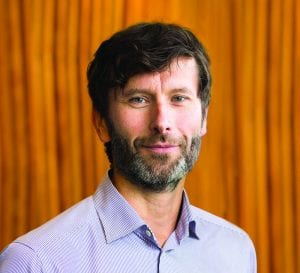Dear Colleagues
Welcome to the June issue of our newsletter for 2019.
This month we bid farewell to Chelvica Ariyanayagam who did a terrific job as our first research programme coordinator (under the university’s new research management structure). Many thanks and best of luck to her. We also bid farewell to Dr Hannah Kersten who joined us as a Lecturer in 2016. Hannah (along with Phil Turnbull and others) has worked incredibly hard setting up the Part II courses that are a big part of our ongoing curriculum reorganization. In terms of her approach, Hannah is highly inter-disciplinary as was evidenced by the confluence of optometry, ophthalmology and neurology staff we saw in the pub for Hannah’s farewell drinks last week. Hannah is relocating to Edinburgh with her partner Sid and we wish her the very best of luck with the move.
Earlier in the month several SOVS staff, including myself, attended the Association for Research in Vision and Ophthalmology (ARVO) meeting in Vancouver. It was a fantastic event with a great deal of work focusing on the role of artificial intelligence in eye health management. These technologies are moving ahead at a rapid pace and I believe that optometry stands to benefit hugely from the advent of devices that automatically diagnose eye disease. That is not to say that we should not be mindful of the risks – ethical and otherwise – that such an approach poses but rather that such technology emphasises the potential for optometry to take a more central role in the management of the range of health conditions that impact the sight of our ageing population.
In a similar vein, last week we had Dr James McKelvie (UoA Ophthalmology, Waikato and Auckland DHBs) initiate the new SOVS lecture programme by delivering a fascinating lecture on his web-based cataract referral software, CatTrax. This software improves patients’ access to surgery for cataracts, and has had immediate and tangible benefits for patients in the health board where it is being trialled. The potential for such systems is great: whether it be from the patient’s perspective (speeding access to health care), the optometrist’s perspective (reducing administrative burden), the surgeon’s perspective (where complicated cases can be referred to more experienced doctors) or the health-board perspective (where improved consistency of referral equates to cost-savings). James spoke about several future applications of this technology to other diseases of the eye and I am excited to see how this innovative technology develops in coming years.
Staying with the lens and with community eye health, amongst other stories in this issue you will be hearing from Dr Lisa Hamm who has a long-standing research interest in childhood cataracts. This sight-threatening condition affects about one in 10,000 children worldwide. While detection and treatment for this is readily available in New Zealand, this is not the case in East Africa and Lisa describes her work with the Kilimanjaro Centre for Community Ophthalmology (KCCO) based out of the University of Cape Town. It’s an important and inspiring project.
Regards,
Professor Steven Dakin
Head of School, Optometry and Vision Science
Faculty of Medical and Health Sciences
